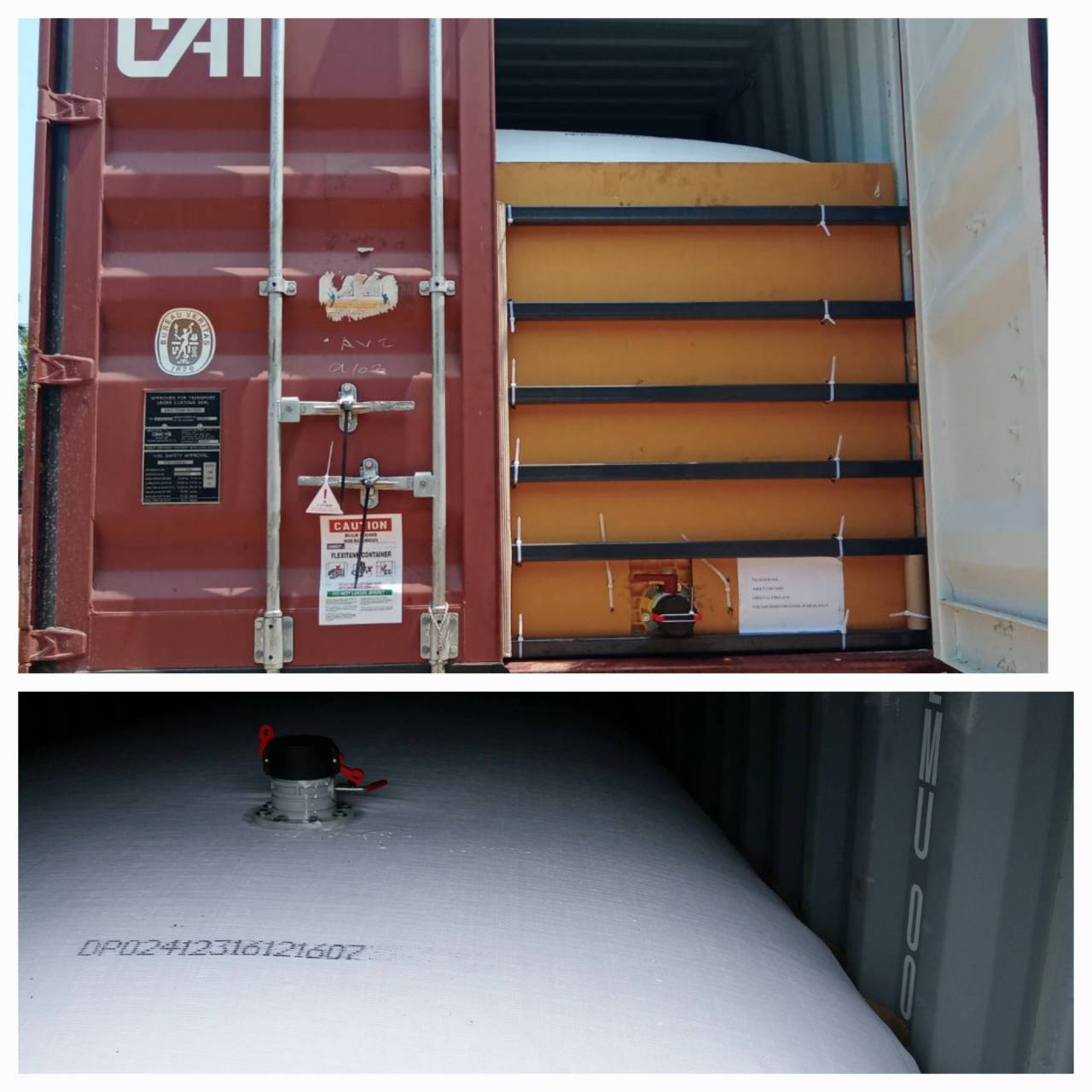Loading, Discharge And Disposal Procedure
FLEXITANK LOADING PROCEDURE
Proceed To Do Loading
- Upon container arrival at loading site, open right hand door ONLY (left hand door MUST BE CLOSED at all times)
- Check flexitank is in the correct position and not moved during trucking
- Connect site delivery line to the flexitank hose and commence pumping
- When full, close valve and disconnect site delivery line
- Clean the valve, observe if there is any leakage, tighten the inner screw cover, cover the cap-lock, close the right side container door, and lock the seal then the container can be transported.
FLEXITANKS FULLY LOADED

FLEXITANK DISCHARGE PROCEDURE
- Position container with gentle slope to door end of container
- Open right hand door “ DO NOT OPEN left hand door
- Removed flexitank hose from straps and place at container door
- Connect site receiving hose and open valve
- Start pumping to discharge
- Continue to pump until flexitank is empty
- Bulkheads can be removed once empty and the tank check for any residues
- If necessary, the tank can be cut open at the corner to remove any remaining liquid
FLEXITANK DISCHARGE PUMP INFORMATIONS
- Must be self-priming and positive displacement pumps
- Air Driven pumps such as a Wilden or Sandpipers are recommended
- Gear pumps are also recommended
- Centrifugal pumps cannot be used
Empty Flexitank Disposal Procedures
Recycling : Polyethylene is extremely suitable for reuse. From an environmental point of view, polyethylene is one of the friendliest materials. It is a thermo-plastic material, which means it can be melted down and used for making products virtually indefinitely.
Disposal : two means of disposal :-
- Incineration : Incineration is the preferred disposal method. This consists of delivering the drained and packed Flexitank to designated and authorised company which complies with local and environmental regulations.
- Landfill : Landfill is the other disposal method. In this instance and after draining , all valves and vent ports should be removed from the flexitanks. The material of the Flexitank should then be cut into sizes no larger than one square yard (one square meter). The material can then be delivered to a designated and authorised company, which complies with local and environmental regulations.